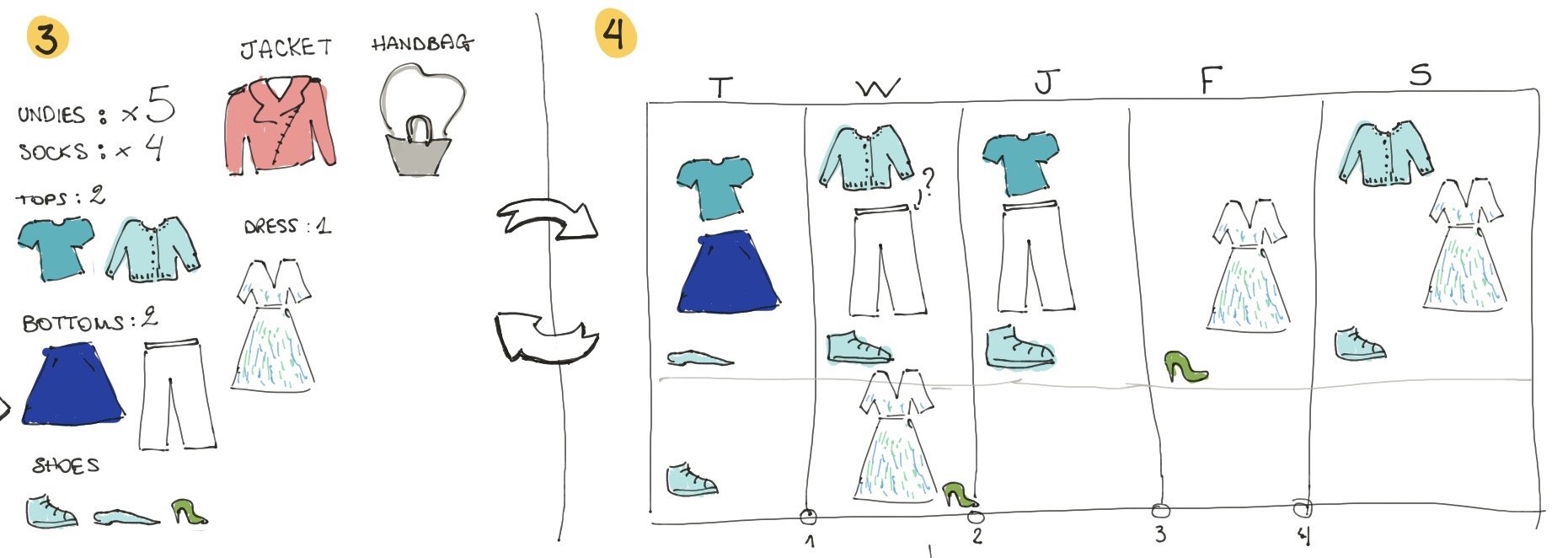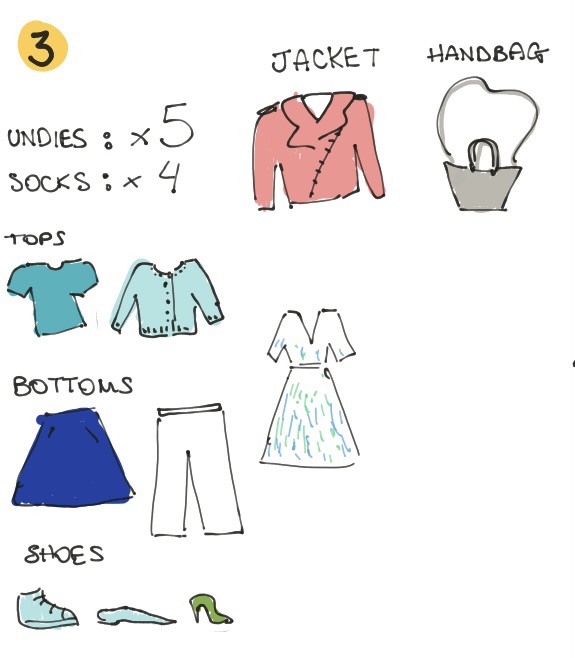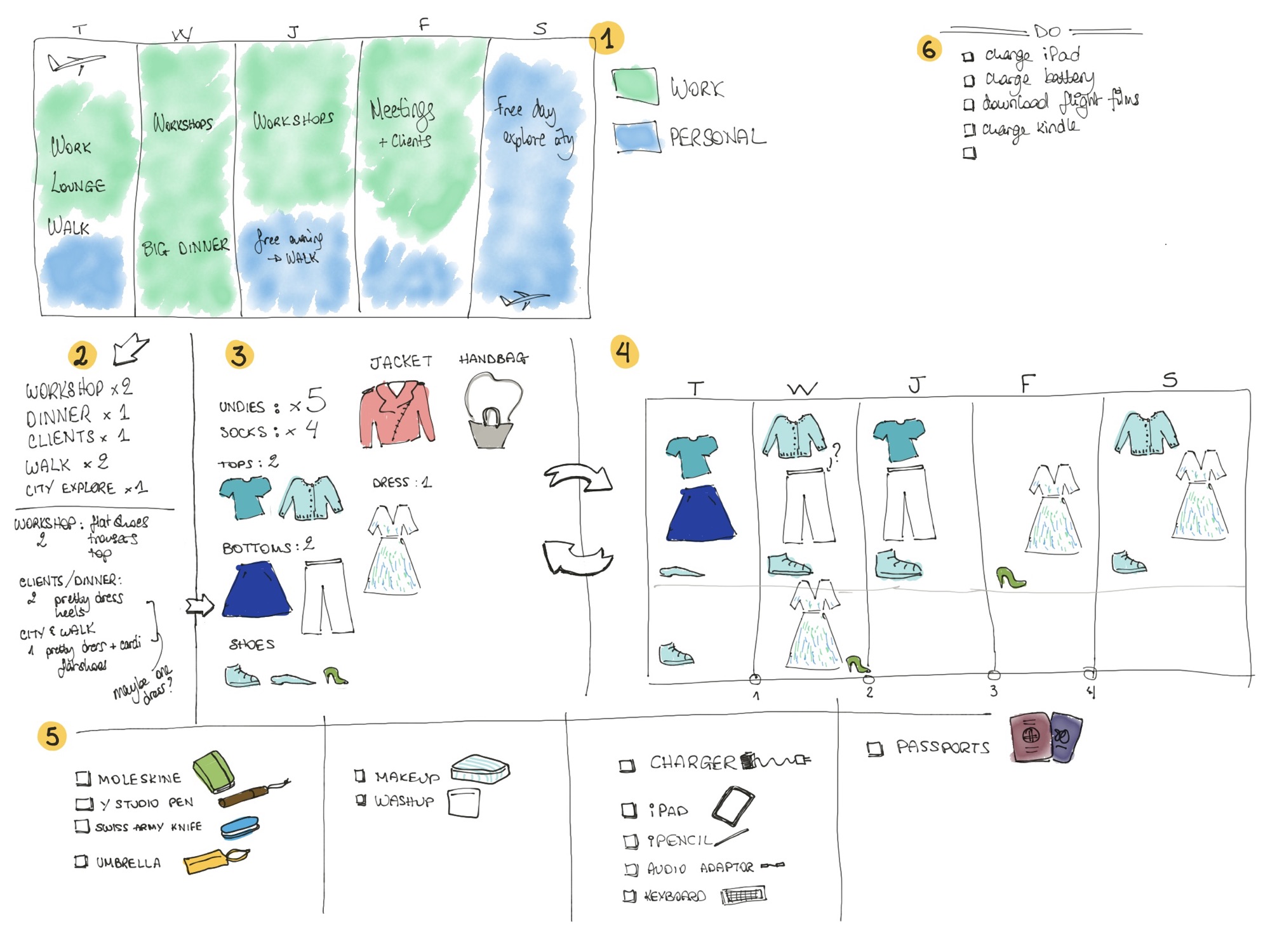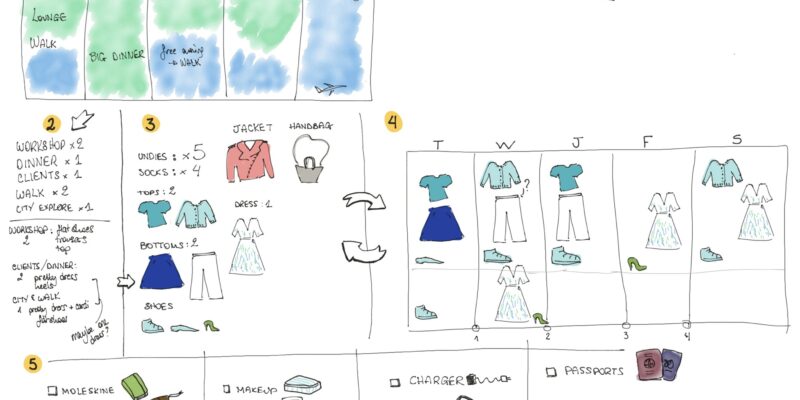I love travelling.
Something about being above the clouds, or the buzz of the airport, or just seeing new things, all make my hippocampus and other bits of my brain happily buzz. And typically, I will sit down, make a list of things to pack, and go off and pack them. In two waves. Night one is get it all in, and night two is revise and add whatever i’ve remembered I need or just want.
But. In March 2023 my brain was f***ed.
Two trips in 2023 were done under the influence of a hefty dose of a hormone (progesterone) that was supposed to help me settle an IUD which should lighten my periods forever, making me less anaemic. (2024 update: this failed. Twice.)
Turns out Progesterone has a few side effects. The nice ones are deeper and longer sleep, and a numbing to all anxiety. The not-so-nice ones involve a drastic reduction of my cognitive abilities, and severe depression… as well as a permanent (though light) period. Oh, and epic brain fog.
I checked with my therapist and psychiatrist. This is real. I hadn’t been warned about the downsides. Somehow, this made it nearly impossible to even remember what is in my wardrobe (all jokes from my friends about the titanosaur-sized wardrobe can suck on a lemon 🍋, because I normally CAN remember it all) let alone decide on what to bring.
Now what?
So I had to invent a method to make it possible for me to make a suitcase. Because my trip was complex. One free morning in Miami (30C), followed by three days of socialising and attending talks with colleagues (15C to 25C), followed by three days in Chicago (-15C). Yes, minus 15. 🥵 to 🤓 to 🥶. I won’t use it as an example, because it is a crazy trip that nobody should ever have to do.
Below is my brainfog-proof method for packing. Six steps. Culminating in two lists. The one to pack and the one to do. Here is the breakdown.
You’ll notice I am a visual thinker, like Temple Grandin.
Step 1: Calendar the activities, and count the instances
Draw the time you are away, one column for each day. Split the day into activities. Maybe it’s daytime and evening, like on a beach holiday. Or maybe it’s a theoretical city break with two daytime museum visits, five nice evening dinners at 15C, two long walking days… I recommend doing this in a visual breakdown, because you can then have a bit of an area-based view of how much you need.

Now I am NOT advocating planning your entire holiday’s daily agenda before you go. Absolutely not!! Just make some boxes in the week of the types of activities you enjoy doing, and see how many you feel comfortable fitting into the number of days you’ve got. Do you expect one lazy home day? Five? No museums? All the museums? See what fits. Because by drawing them you make time geometric, and that means you’ll SEE the limit of how much of a thing you can do.
Step 2 & 3: Count activities and items
Once you have boxed out the days with activities, count how many times each activity fits in your time away. More boxes marked “walking”, the more you’ll need to think about comfy shoes, socks, and perhaps trousers or a backpack.
List how many of each type (top, trouser…) you think you need
Draw out items you might want to take.

Step 4: Create outfits for each activity
Take one activity, like a business dinner or a day of workshops.
Items could be generic based on garment type “1 skirt” or specific “blue jersey circle skirt”.
Illustrating them can help you see the combos you can make. You can then start to see opportunities of re-wear, as you slowly draw them into your weekly calendar illustration.
I tend to loop between steps 3 and 4 multiple times, iterating towards as much re-wear as possible, and refining my garment choices to which specific items I want to pack.

Step 5: Create packing list using the outfits and activity instances
The penultimate step before packing (and yes, I am embarrassed that I needed all this process to manage to pack, but hey-ho) is to make a packing list by genre. So all tops in one list-block, dresses in another list-block, shoes in another, bags, etc… the point of this is to see how much of each type of item you are packing overall.
In this case, I had drawn my packing list, as the trip was short, and the outfits few. Most often I’ll be listing them out “green zara jeans” “blue jersey circle skirt” “pretty dress with splatter paint”, etc…

Do maintain a list of other things to pack as well, the things are aren’t clothes but chargers, makeup, washbag…

Step 6 (or just a parallel activity): Maintain and action a list of things to DO.
The things to do are just that. For me, it is usually refills and charges. Like charge the kindle, refill the fountain pen and night cream, shower, put the trash out, turn out the water main… whatever you need to do before you step out of the house for the duration of your trip. Jot it down in a checklist.
I often rewrite that list at least twice, because it shrinks as I action it, and then it becomes harder to spot the things left to do.

That is it.
This is my method for packing. I mostly do this on Paper, a simple drawing app for the iPad, or on actual paper.

1. Visual view of the getaway activities
2. Count activities and item types
3. Devise outfits using garment types for each activity
4. Choose specific items for each garment type based on wash & rewear possibilities
5. Write or draw the packing list.
6. Maintain a parallel “todo” list on the side for all the things I want to remember to do before I go.
I hope you never need to use this because of brain fog… but if you do have brain fog for any reason, maybe a bad cold has hit… then perhaps this method can slowly and steadily get you on your way despite that.
Oh and if you’re curious about how I managed the miami-chicago trip…
Thermal leggings, a cashmere jumper, and one maxi dress for Chicago, and four summer dresses, two tops, one pair of shorts, and a blazer for Miami.
The summer dresses (worn mostly at evening dinners in Miami) were re-worn with the thermal leggings and jumper once in Chicago, adding outfit options. Trip was a success.

